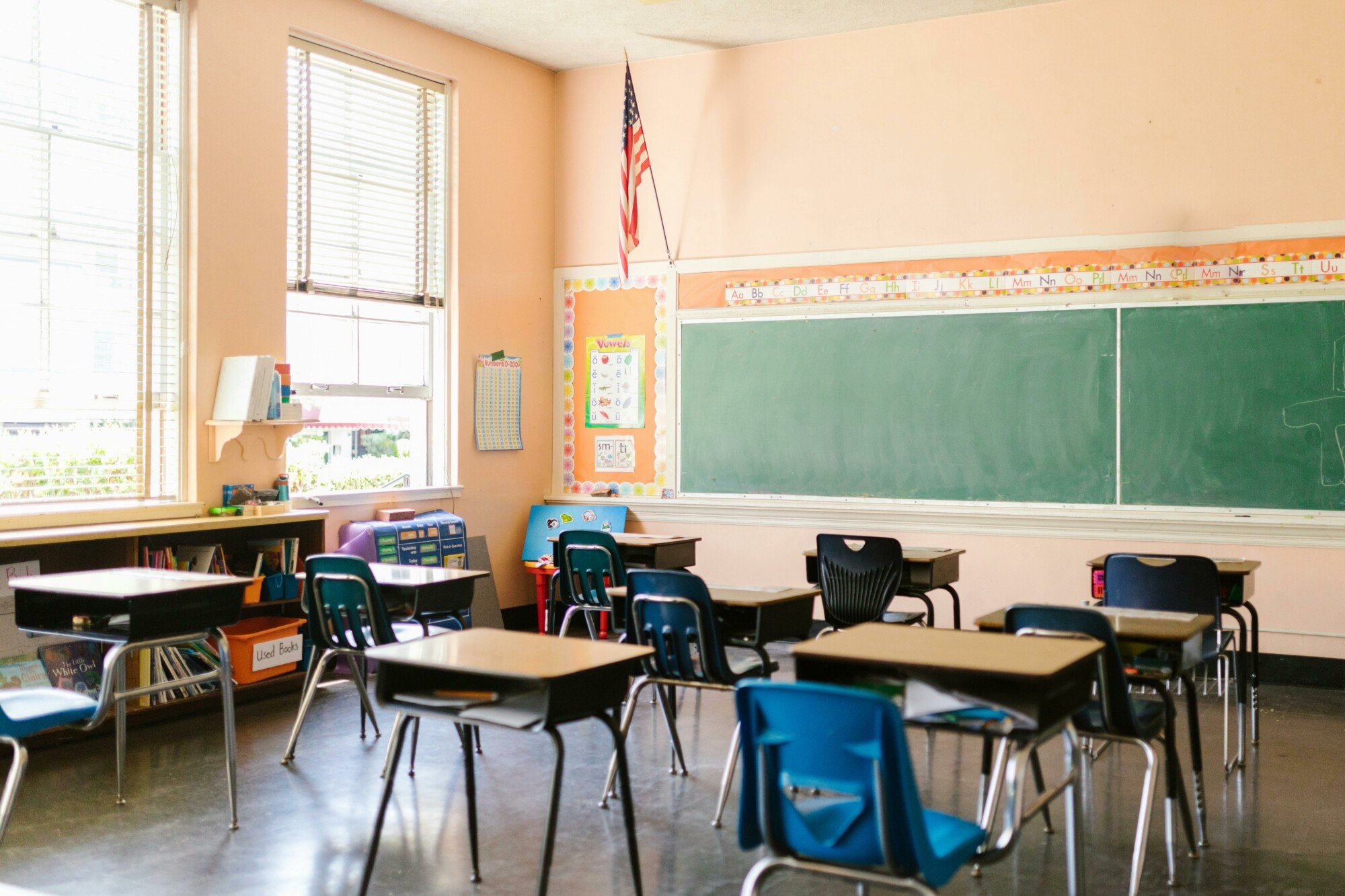
Why American school segregation didn’t end with Brown v. Board of Education
March 16, 2023
Volunteer coordinator, Reading Partners New York
During a recent tutoring session, I read a book with my student called Same Same, But Different by Jenny Sue Kostecki-Shaw. We alternated pages, reading about two pen pals from vastly different cultural backgrounds. They would write to each other, describing how their lives had similar elements imbued by different cultural experiences, like how one child greeted his friends with a fist bump, while the other greeted his friends with a slight bow and a statement of “namaste.”
The pen pals in the book lived similar lives but were both culturally and racially different. One child was White, while the other was Brown. Sharing this book with my student, my attention was drawn to the makeup of our class. All of our students come from unique backgrounds and no two are the same. Yet our class is made up entirely of Black and Brown students. Different, but much the same.
American schools are heavily segregated by race. The students we serve at Reading Partners are primarily Black and Brown children, and they often receive fewer resources than their White counterparts considering they attend schools in segregated neighborhoods. School funding is determined in part by property value and property tax, external factors outside students’ control which are heavily influenced by race. These students are equally capable but unequally supported.
It can be hard to see the extent of segregation, and it is even harder to see its impact. But it affects every single student in public schools across the country. School segregation tugs our communities and our schools farther and farther away from academic achievement and progress.
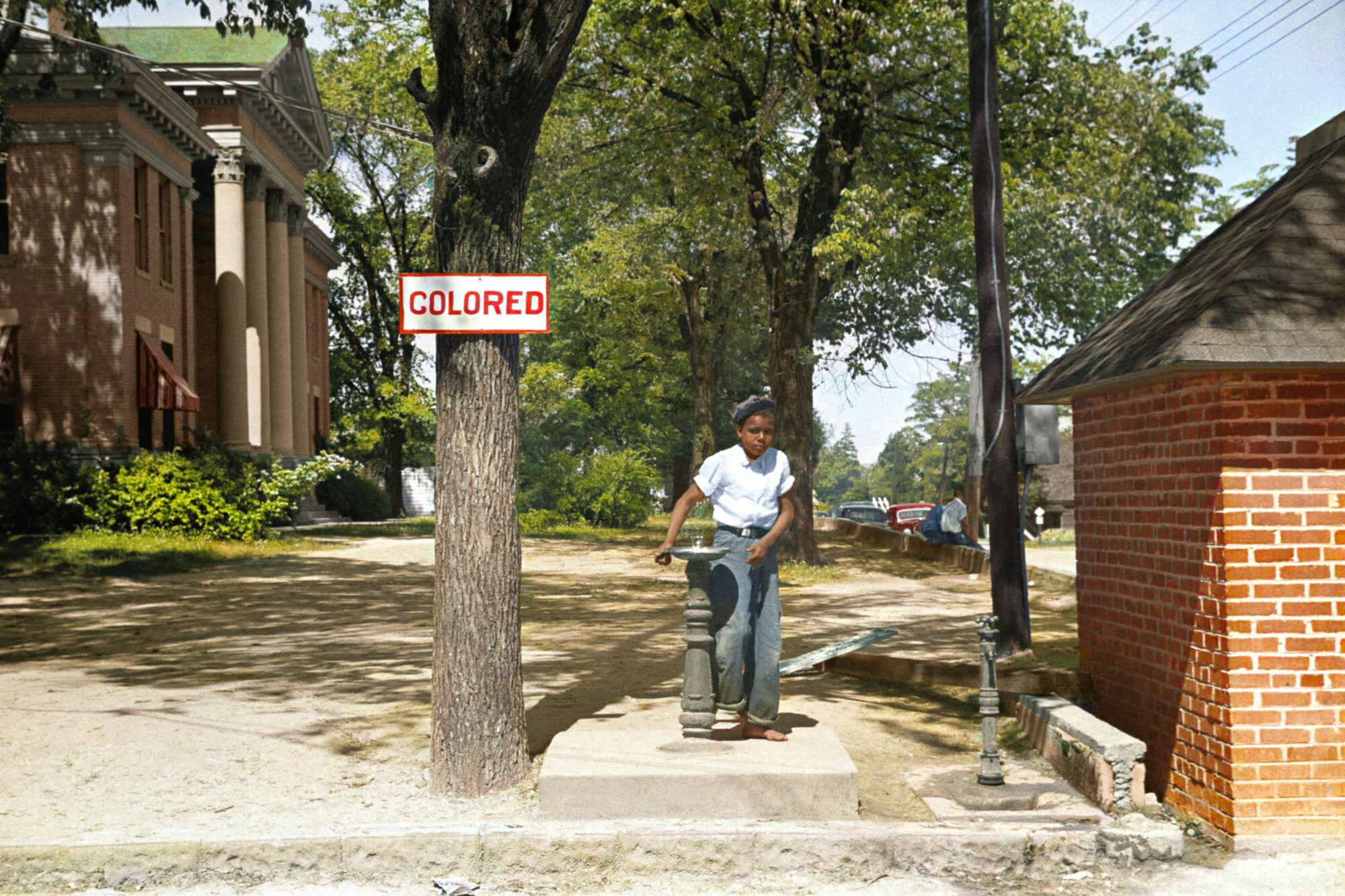 Photo by Unseen Histories on Unsplash
Photo by Unseen Histories on Unsplash
A brief history of segregation
In 1954, the Supreme Court ruled in Brown v. Board of Education that the 14th Amendment’s equal protection clause made it unconstitutional to maintain segregated and “separate but equal” public school facilities based on race. The process of desegregating these schools, however, was not congruous across the country. In Southern states, where segregation was codified into law, federal courts required and oversaw the process of integration. While this facilitated successful desegregation early, it also meant that many schools were resegregated once federal oversight ended.
In cities where segregation existed but was not codified into law, courts were much more limited in their ability to enforce integration. Integration was further hindered by court cases like Milliken v. Bradley, which severely limited the power of the courts to enforce desegregation across school districts.
In general, desegregation was effective. Nikole Hannah-Jones writes:
In 1964, 10 years after the Brown decision, just 2 percent of black children in the South attended schools with white children. By 1972, nearly half were attending predominantly white schools. After a very short period of serious court intervention and federal enforcement, the South had gone from the most segregated region of the country for black children to the most integrated, which it remains 40-some years later.
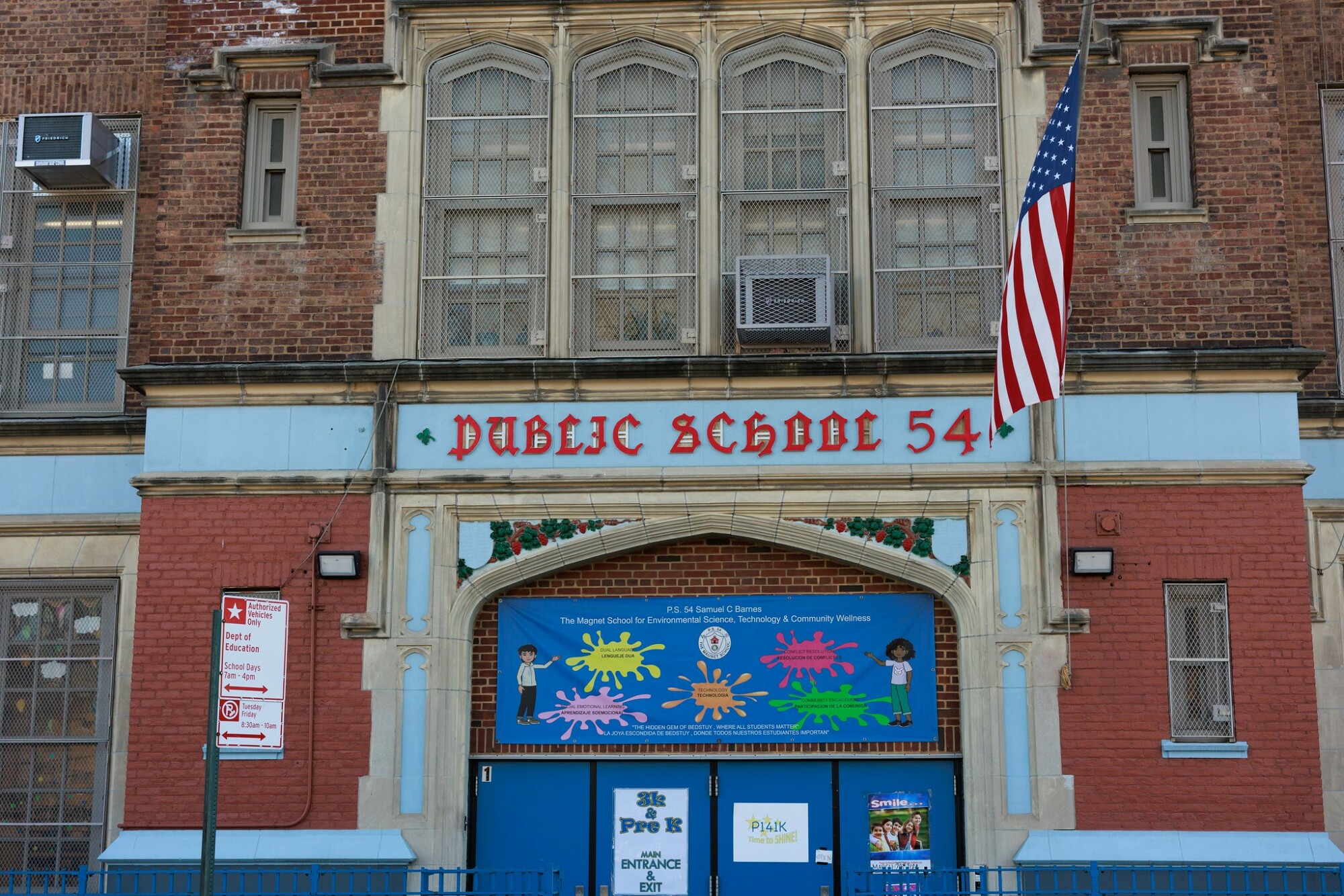
But in many cases, these policies did not desegregate schools in the lasting and permanent ways they sought out to achieve. Schools have also changed in the decades since Brown v. Board of Education. At the time, the main issue was segregation amongst schools within the same school district. Today, most data suggests that school districts are more segregated, rather than individual schools, potentially as a result of court cases like Milliken v. Bradley.
In the midst of desegregation, the US government was simultaneously statutizing segregation in neighborhoods. The Great Depression crashed the American housing market. The Federal Housing Administration was created in 1934 in order to help revitalize the housing market by stabilizing interest and mortgage rates. One such program from the Federal Housing Administration (FHA) granted government-insured mortgages to homeowners. These mortgages, however, were not granted to any and all homeowners and the FHA set up strict parameters for these loans, parameters that would be adopted by banks in later years.
The government wanted to insure homeowners that were deemed “good investments,” so the regulations they created were meant to evaluate families based on their neighborhoods. The FHA created color-coded maps of neighborhoods across the country, labeling certain neighborhoods using an A-D categorization metric based on a neighborhood’s riskiness. The most risky neighborhoods, or areas where property values were expected to drop over time, were consistently Black and Brown neighborhoods. Even integrated communities where Black and White families lived together were given low ratings. These neighborhoods were given D ratings and a red color code on the map, hence the term “redlining.”
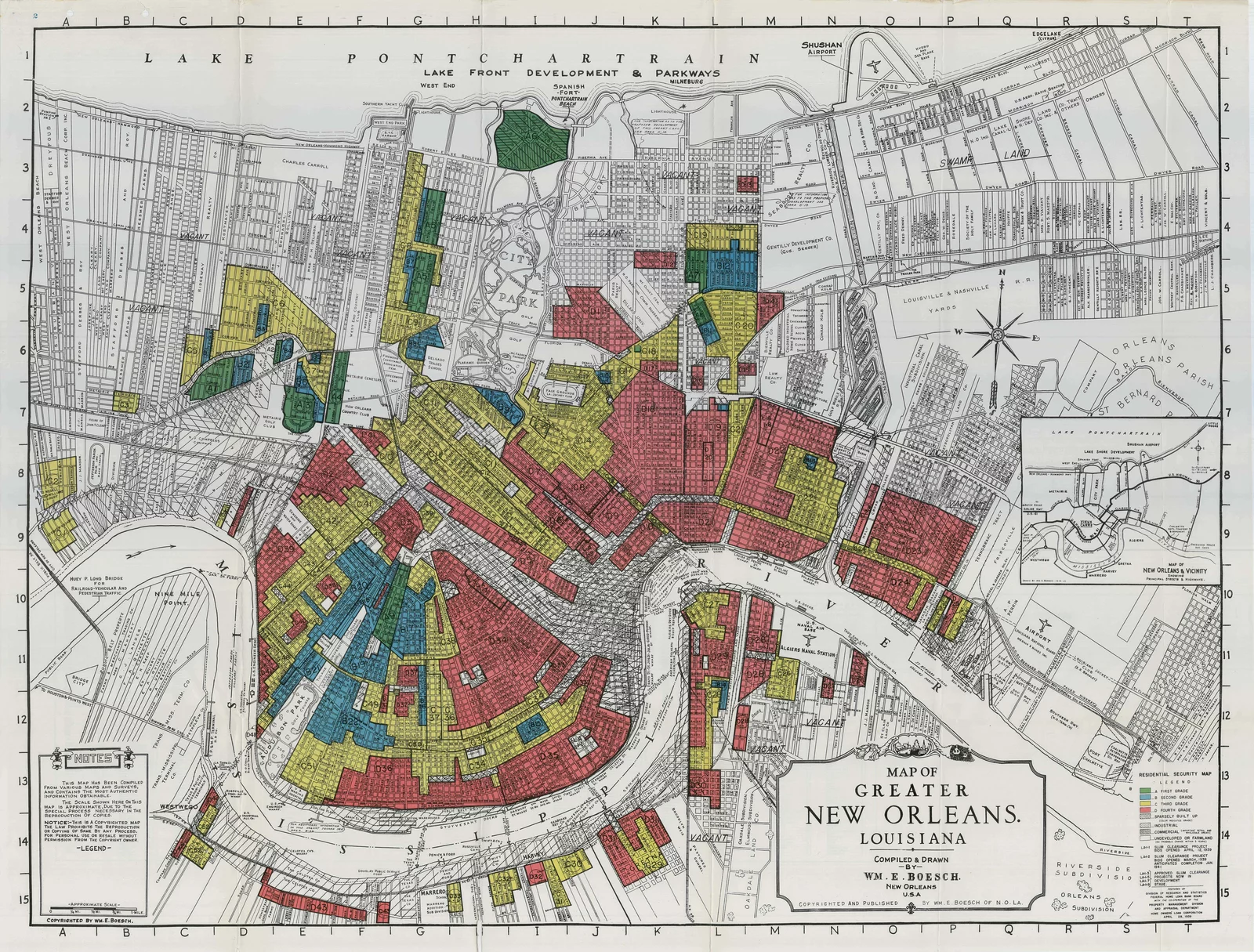 Photo by Mapping Inequality
Photo by Mapping Inequality
Banks and real estate agents aroused unfounded fears of sharp declines in property value as a result of Black and Brown families moving into predominantly White communities, causing many white families to leave integrated neighborhoods in an exodus now known as “white flight”. Meanwhile, these same banks and real estate agents, at the behest of the FHA, kept many Black and Brown families from moving into neighborhoods with more resources through the parameters established in redlined maps. These policies had been going on long before the FHA wrote them into law, but the redlining maps they created helped ingrain these policies into real estate practices. When they were eventually banned by the Fair Housing Act of 1968, the effects lingered in neighborhoods across the country. FiveThirtyEight, an organization that uses “data and evidence to advance public knowledge,” analyzed data from 138 metropolitan areas and found that “nearly all formerly redlined zones in the country are still disproportionately Black, Latino or Asian compared with their surrounding metropolitan area, while two-thirds of greenlined zones — neighborhoods that HOLC deemed “best” for mortgage lending — are still overwhelmingly white.” And the neighborhood you live in, more than any other factor, is the largest determinant for where your children attend school.
Modern segregation has been built over the course of multiple decades. It is not a new phenomenon, but the continuation of an old one. It is the maturation of inadequate desegregation policies and the direct descendant of redlining which has kept American metropolitan areas starkly divided by race.
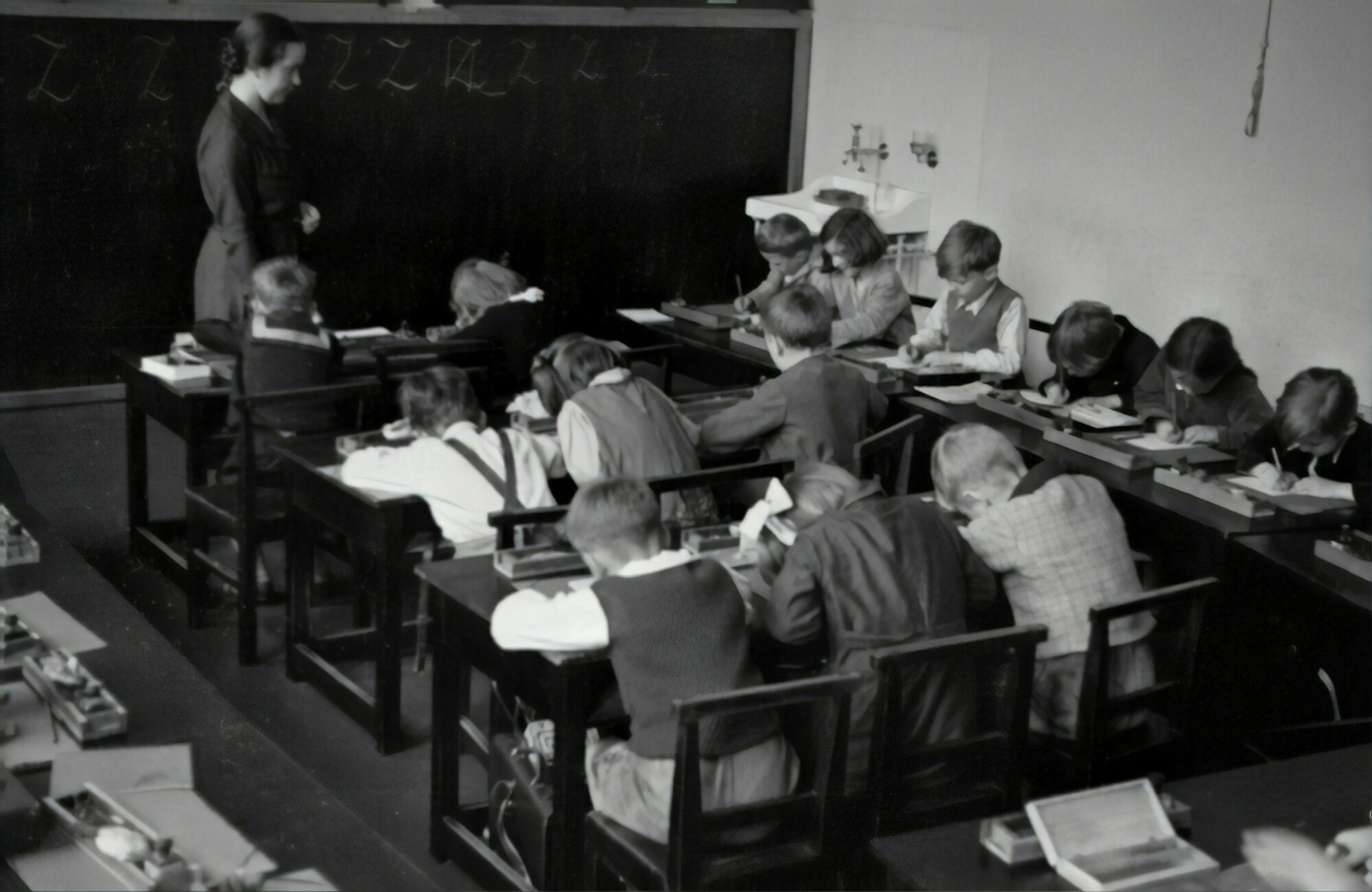 Photo by Austrian National Library on Unsplash
Photo by Austrian National Library on Unsplash
Segregation in the 21st century
America’s student body is more diverse today than it ever has been. The student population comes from an extensive array of cultural, racial, and socioeconomic backgrounds. But our schools stay highly segregated along racial and ethnic lines. A US Government and Accountability Office Report released in July of 2022 found that over 30% of students (around 18.5 million students) attended schools where 75% or more of the student body was the same race or ethnicity. Encompassed in those numbers is the nearly 14% of students who attend a school where 90% of students share the same race or ethnicity. The study found that this segregation was not concentrated to a specific segment of the US. It spanned regions, school types, and even community types (urban, rural, suburban).
Today, the effects of redlining are compounded by modern challenges in the public education sector. Schools often secede from their district because school resources are limited by district barriers. Those secessions often concentrate students of the same race, with newly created districts containing much higher proportions of White students compared to Black and Brown students.
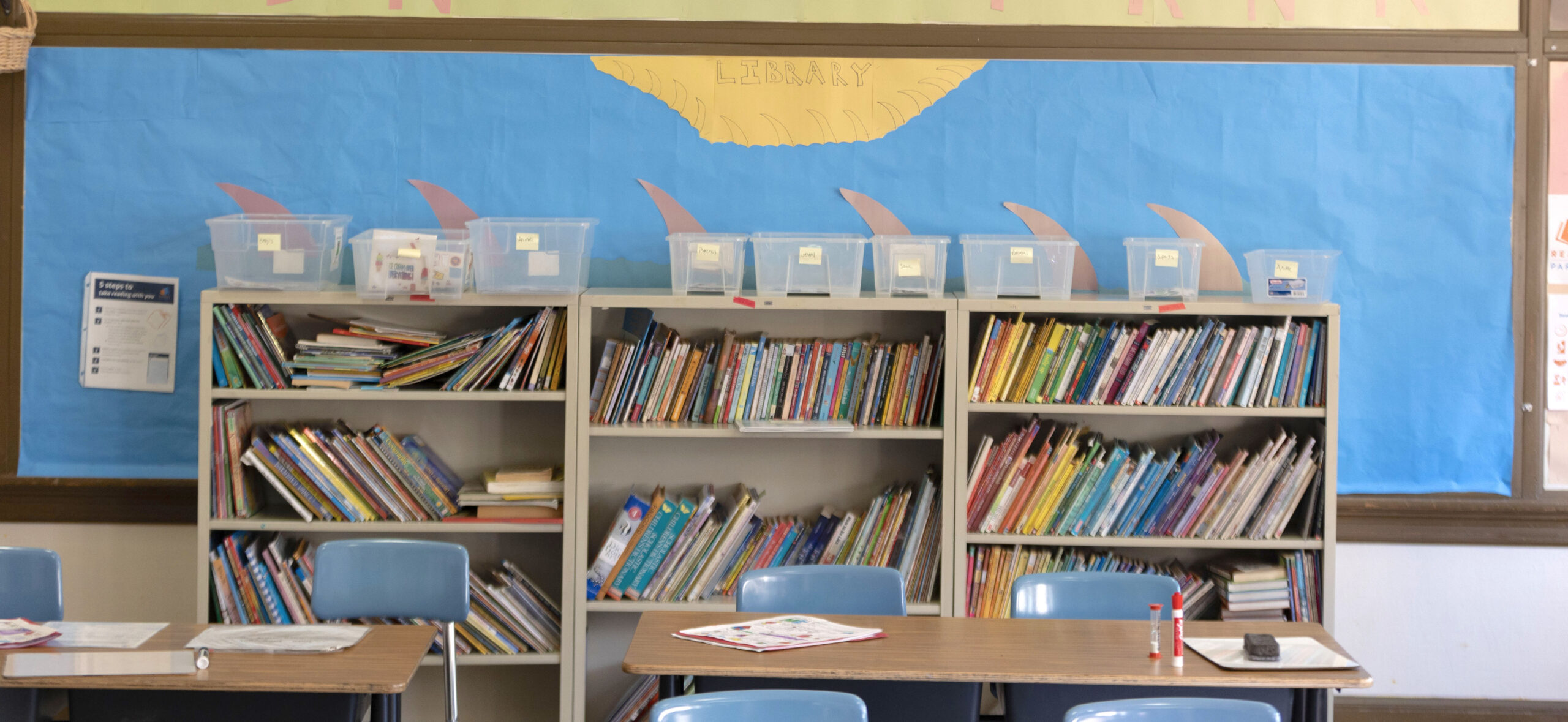
Parents and families have also been reticent to alter the existing racial landscape among public schools. In 2016, New York City faced a debate over a proposal to integrate two schools by moving students to a different school site. Families held up progress for two years, until a proposal that was much smaller and less ambitious finally passed.
President Obama was able to secure federal grants towards increasing diversity in public schools. Known as “Opening Doors, Expanding Opportunities” grants, this funding would have helped public schools across the country find ways to increase socioeconomic diversity among the student population. In 2020, the Trump Administration axed these grants.
School integration success has been both minimal and short-lived. When proposals have arisen, they have been met with open hostility and disdain. We can trace modern school segregation directly back to historically racist policies deeply embedded in our neighborhoods, schools, and governments. But segregation remains not because we have forgotten its existence in the many years since Brown v. Board of Education. It remains because integration has active opponents.

Why is integration necessary?
A report published in 1980 in the University of Illinois Press found significant disparities among resource allocation between predominantly White schools and predominantly Black and Hispanic schools in Los Angeles. The results of this study came from 1976-1977 when schools should have been integrated. When funds for special state and federal funds were excluded, researchers found that Black and Hispanic schools received 10-11% less funding per student than White schools. In Black and Hispanic schools, spending for classroom teachers was down 14-15%, teacher salaries were lower across all grade levels, and teachers were less experienced compared to those in predominantly White schools.
Today, school resources are still distributed as disproportionately as they were in the ‘70s. The US Chamber of Commerce conducted research on what we call the “opportunity gap,” referring to the gap in resources and support students receive based on external factors like race, ethnicity, or socioeconomic status. Their report found that the national per-student spending in high-poverty non-white schools was $1,500 less than the national average. These gaps in opportunity are what cause achievement imbalances for students later in life.
But integration is not just about school resources. There are academic and health benefits for students attending integrated schools too. Research has shown that students in integrated schools have 30% more growth in academic achievement, are 68% more likely to enroll in college, and are less likely to drop out of school. They have higher self-confidence, less anxiety, and hold fewer biases, allowing them to form deep emotional connections across racial and socioeconomic lines. Friendships made across racial and ethnic lines can lead to children treating members of other groups with greater respect and empathy.
 Photo by Caleb Oquendo
Photo by Caleb Oquendo
What comes next?
The Harvard Gazette interviewed education academics about school integration and both interviewees mentioned the same dynamic at work among American families: parents across demographics want their schools to be integrated, but lack the depth of desire to actually make that integration happen. Parents have their own sets of biases and beliefs about their own and other school districts, and it can be difficult to envision sending one’s child to a different school.
But there are some things that we know for certain. Increasing funding for non-white schools is a step in the right direction, but it is only a step. It is unacceptable that in this segregated school system, Black and Brown students are afforded fewer resources than their White counterparts. But even if we were able to provide equal resources across the board, children would still lose out on the wealth of other benefits that come from integration. Research has shown that students have more academic success in integrated schools with fewer resources than those in segregated schools with greater access to resources. Funding is but a singular brushstroke in a much larger picture.
We know that integration does not just benefit Black and Brown students. It is a misconception held by many parents that White, affluent children are being asked to go to Black and Brown schools in order to benefit those Black and Brown students. The benefits of integration are not a one-way street; they flow both ways. White students benefit equally from being in diverse and integrated schools, interacting with students from different racial, socioeconomic, and cultural backgrounds. Students of all races and ethnicities see academic benefits and social-emotional benefits that will last them long into the future.

We know that choosing to do nothing, to maintain the status quo, will only widen the gap between students at affluent schools and those at low-income schools. Students with access to resources will continue to succeed, and students without will get left farther and farther behind. Integration is not a process that happens amidst passivity; it requires active change.
Parents should be open-minded when considering new, more diverse schools for their students. They should visit schools rather than relying on hearsay and potentially invasive biases about what that school might be like. They should do research on schools outside their immediate neighborhood before jumping to conclusions about what other neighborhoods are like.
Books like Same Same, But Different help teach students about celebrating differences and recognizing what makes us the same. It shows them what a world looks like where your friends come from diverse racial and cultural backgrounds. But our students should be able to engage in the reality of that experience themselves. It is hard to consider moving schools, and parents frequently express vitriolic disagreement with forced attempts at integration. But the logical reasoning for integrating our schools exists plainly and openly. It’s time to be forward and deliberate with our attempt to change.

Works Cited
“1934: Federal Housing Administration Created,” n.d. https://www.bostonfairhousing.org/timeline/1934-FHA.html.
“America’s Opportunity Gaps: By the Numbers,” June 24, 2020. https://www.uschamber.com/diversity/america-s-opportunity-gaps-the-numbers.
Brown, Emma. “Trump’s Education Department Nixes Obama-Era Grant Program for School Diversity.” Washington Post, October 28, 2021. https://www.washingtonpost.com/news/education/wp/2017/03/29/trumps-education-department-nixes-obama-era-grant-program-for-school-diversity/.
Oyez. “Brown v. Board of Education of Topeka (1).” Accessed March 14, 2023. https://www.oyez.org/cases/1940-1955/347us483.
Carrillo, Sequoia, and Pooja Salhotra. “The U.S. Student Population Is More Diverse, but Schools Are Still Highly Segregated.” NPR, July 14, 2022, sec. Education. https://www.npr.org/2022/07/14/1111060299/school-segregation-report.
Choy, Ronald K. H., and Bernard R. Gifford. “Resource Allocation in A Segregated School System: The Case of Los Angeles.” Journal of Education Finance 6, no. 1 (1980): 34–50.
Jackson, Candace. “What Is Redlining?” The New York Times, August 17, 2021, sec. Real Estate. https://www.nytimes.com/2021/08/17/realestate/what-is-redlining.html.
Mejía, Ryan Best, Elena. “The Lasting Legacy Of Redlining.” FiveThirtyEight, February 9, 2022. https://projects.fivethirtyeight.com/redlining/.
Oyez. “Milliken v. Bradley.” Accessed March 14, 2023. https://www.oyez.org/cases/1973/73-434.
Natividad|, Ivan. “Why Are American Public Schools Still Segregated?” Berkeley News, March 4, 2020. https://news.berkeley.edu/2020/03/04/why-are-american-public-schools-still-segregated/.
Office, U. S. Government Accountability. “K-12 Education: Student Population Has Significantly Diversified, but Many Schools Remain Divided Along Racial, Ethnic, and Economic Lines | U.S. GAO,” August 30, 2022. https://www.gao.gov/products/gao-22-104737.
Rios, Edwin. “US Schools Remain Highly Segregated by Race and Class, Analysis Shows.” The Guardian, July 15, 2022, sec. Education. https://www.theguardian.com/education/2022/jul/15/us-schools-segregated-race-class-analysis.
Taylor, Kate. “Rezoning Plan for Manhattan Elementary School Draws Anger From All Sides.” The New York Times, September 30, 2016, sec. New York. https://www.nytimes.com/2016/09/30/nyregion/rezoning-public-school-199.html.
The Century Foundation. “The Benefits of Socioeconomically and Racially Integrated Schools and Classrooms,” April 29, 2019. https://tcf.org/content/facts/the-benefits-of-socioeconomically-and-racially-integrated-schools-and-classrooms/.
Wang, Guangyi, Gabriel L. Schwartz, Min Hee Kim, Justin S. White, M. Maria Glymour, Sean Reardon, Kiarri N. Kershaw, Scarlett Lin Gomez, Pushkar P. Inamdar, and Rita Hamad. “School Racial Segregation and the Health of Black Children.” Pediatrics 149, no. 5 (April 18, 2022): e2021055952. https://doi.org/10.1542/peds.2021-055952.
Writer, Liz Mineo Harvard Staff. “How to Make American Schools Less Segregated.” Harvard Gazette (blog), July 14, 2020. https://news.harvard.edu/gazette/story/2020/07/how-to-make-american-schools-less-segregated/.
Banner photo by RDNE Stock project



